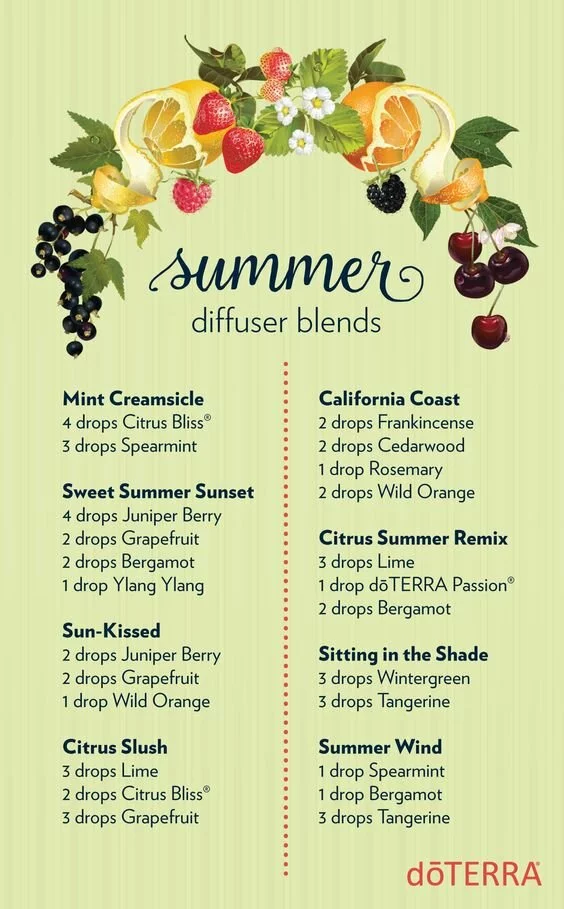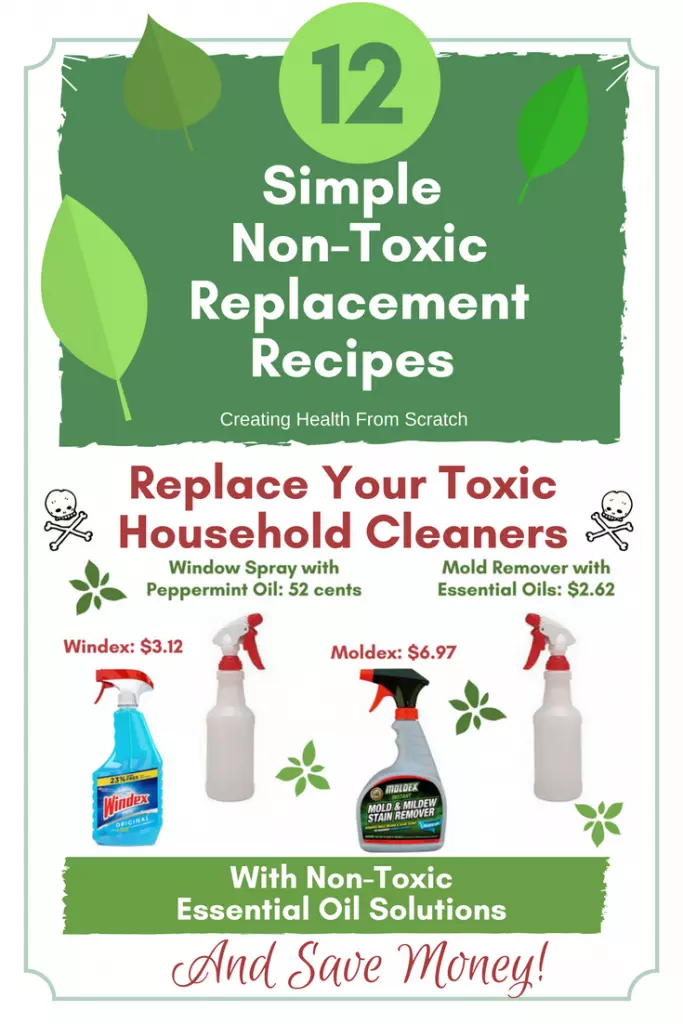 We know there’s toxins all around us. In our food products, our beauty products, our cleaning products and more. Over 84,000 of those chemicals to be precise. As we become more and more aware of those chemicals and their toxic (and sometime fatal) effects, it’s hard to know just how to go about a whole life overhaul. Sure we want to go ‘green’, but then how do we deal with an oven that needs to be cleaned, or a drain that needs to be unclogged?
We know there’s toxins all around us. In our food products, our beauty products, our cleaning products and more. Over 84,000 of those chemicals to be precise. As we become more and more aware of those chemicals and their toxic (and sometime fatal) effects, it’s hard to know just how to go about a whole life overhaul. Sure we want to go ‘green’, but then how do we deal with an oven that needs to be cleaned, or a drain that needs to be unclogged?
Thankfully there ARE options. And most of the time those options are super easy to make, are cheaper and work as well as or better than the toxin laden alternatives. Today let’s talk about seven common household toxins. And I’ll give you some great DIY recipes to try out the next time you need a solution and want it to be non-toxic.
PHTHALATES
This chemical is found in air fresheners, dish soap, beauty products, shower curtains, PVC toys, shampoo, nail polish, shaving cream and a host of other products (sometimes even in toilet paper)!
Health risks associated with phthalates include: low sperm counts, migraines, asthma, lung and liver damage, and reproductive damage.
Would you like some great alternatives to air fresheners?
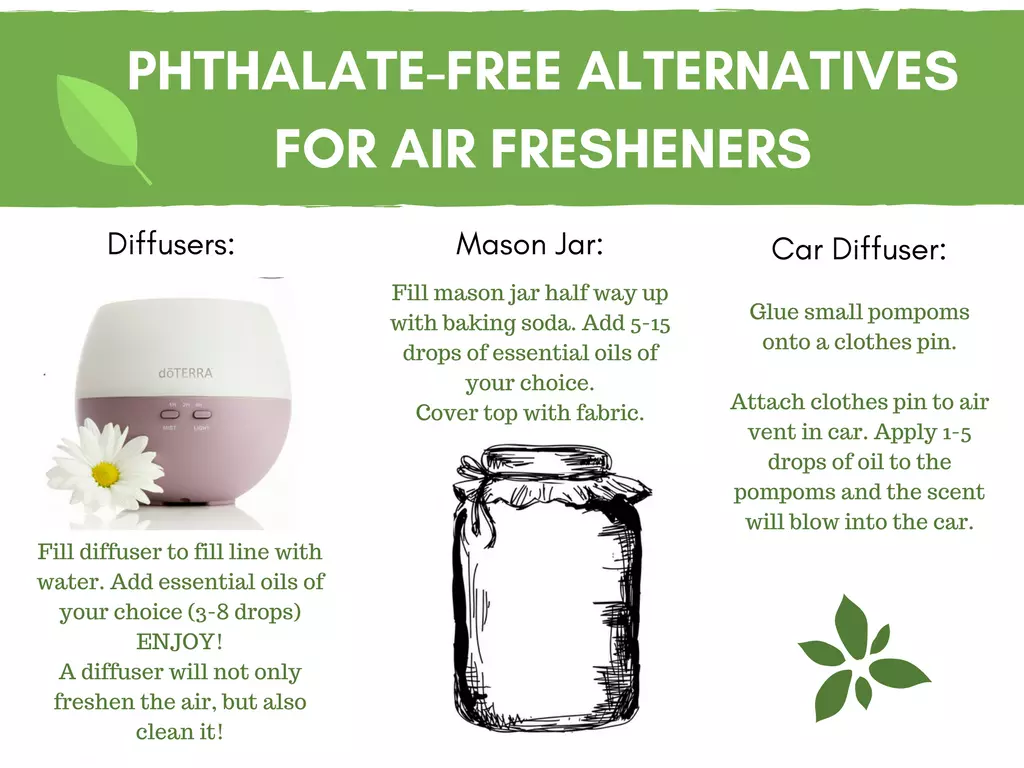
And some summer-time diffuser recipes to try…these recipes not only freshen the air, they clean it and help support a healthy environment as well as a healthy body while they do it. Win/win.
PERCHLOROETHYLENE (or PERC)
This chemical is found in spot removers, carpet and upholstery cleaners and dry cleaning solutions.
The EPA lists it as a possible carcinogen. California has ordered that the state eliminate the use of this drug entirely by 2023 because of the high health risks. Those risks include: increase risk of cancer, kidney dysfunction, neurological effects, mood and behavior impairment, sleeplessness, dizziness, loss of coordination.
Here are three alternatives for carpet care that will get the job done without doing you in, in the process.
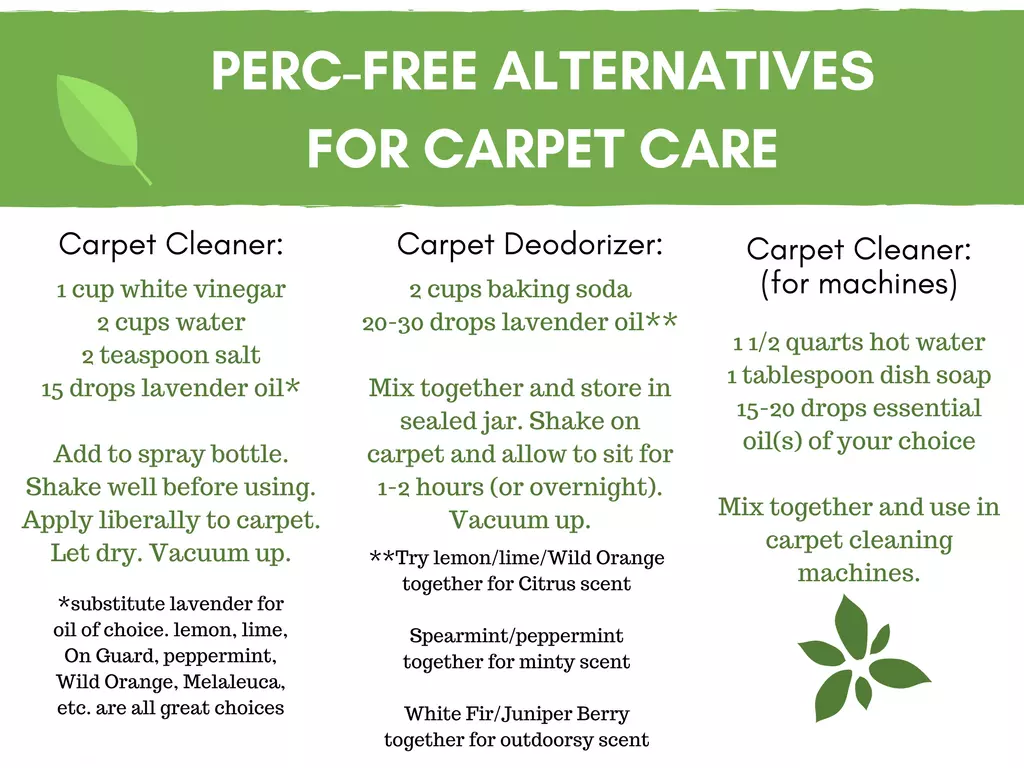
QUARTERNARY AMMONIUM COMPOUNDS (or QUATS)
QUATS is one of the drugs helping breed the antibiotic-resistant crisis in our world right now. It’s also a leading cause of dermatitis (based on a 10 year study). This chemical is found in dryer sheets and antibacterial cleaners and products, among others.
Health risks associated with QUATS include: respiratory disorders, dermatitis, antibiotic-resistant bacteria, coma, convulsions, vomiting, nausea, death
One solution for a QUATS-free household is On Guard Concentrate. This concentrate contains On Guard essential oil which has been proven effective against the super bugs, kills germs and supports a healthy immune system.
How about making (or buying) your own wool dryer balls? (You can learn how to make them here)
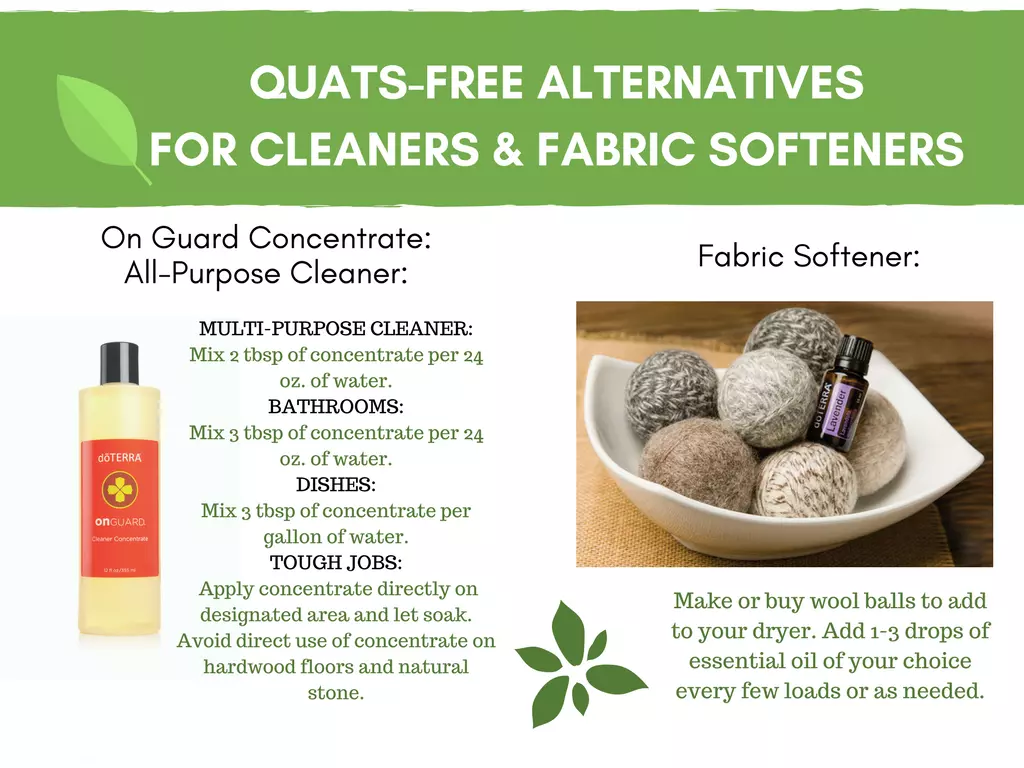
2-BUTOXYETHANOL
This chemical is found in kitchen and multi-purpose household cleaners. It’s actually what gives these products their ‘sweet’ smell….the sweet smell of death?
This same chemical that’s found in supposedly ‘harmless’ cleaners is also found in harsh solvents, varnishes, lacquers and resins…we’re conditioned to treat solvents with great care, but we haven’t learned the same caution with simple multi-purpose cleaners. The whole industry has painted a pretty, safe, clean picture and we’ve bought it for years and years.
Health risks associated with this chemical include: pulmonary edema, severe liver and kidney damage, adrenal tumors, birth defects, narcosis.
How about a great multi-purpose cleaner that costs around 50 cents per spray bottle?

CHLORINE
Chlorine is probably a chemical that most people have heard of. It’s in bleach, scouring powders, toilet bowl cleaners, mildew removers, and even tap water and swimming pools.
It might take some people by surprise to find out that this common chemical is actually listed as a ‘chemical weapon’ and categorized as a choking agent. That’s pretty heavy stuff for such a common drug that’s found in so many different products and places.
Health risks associated with chlorine include: respiratory issues, chest pain, eye irritation, disruption of thyroid function, increased risk of allergies, asthma, bladder and rectal cancers and coronary heart disease.
Here’s some chlorine-free household products for you to try:
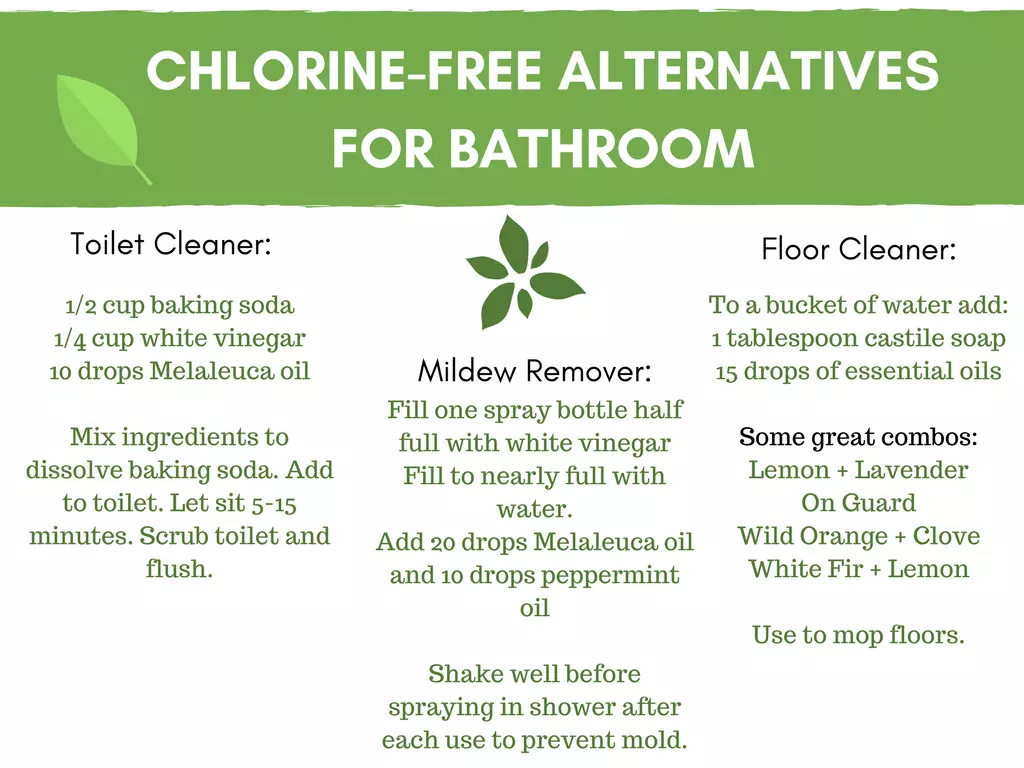
SODIUM HYDROXIDE
Sodium hydroxide is found in products like oven cleaners, drain de-cloggers, and soap.
It’s an extremely corrosive chemical and can cause severe burns that continue to destroy deeper and deeper levels of tissue. It can also cause many eye issues, including glaucoma, cataracts and even blindness. Other possible dangers include: skin ulceration and scaring, blindness and cancer of the esophagus.
How about a sodium hydroxide-free oven cleaner and drain opener?

Obviously this is just scratching the surface in creating a safer, healthier environment for you, your family and your home. If you’re new to DIYing it, rest assured that these recipes are simple and won’t take you very long at all to create. They will save you MONEY. And, hopefully will buy you extra years for your life.
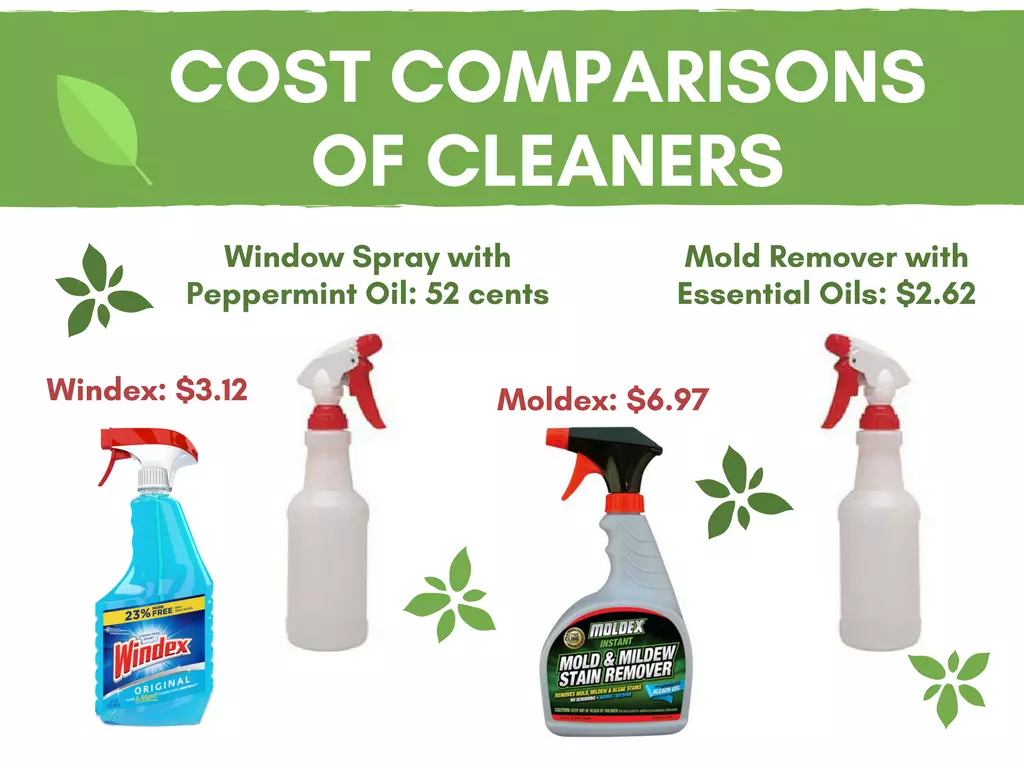
If you want to find out more about essential oils, or where we get ours (and how you can get them 25-55% BELOW wholesale) start here.
